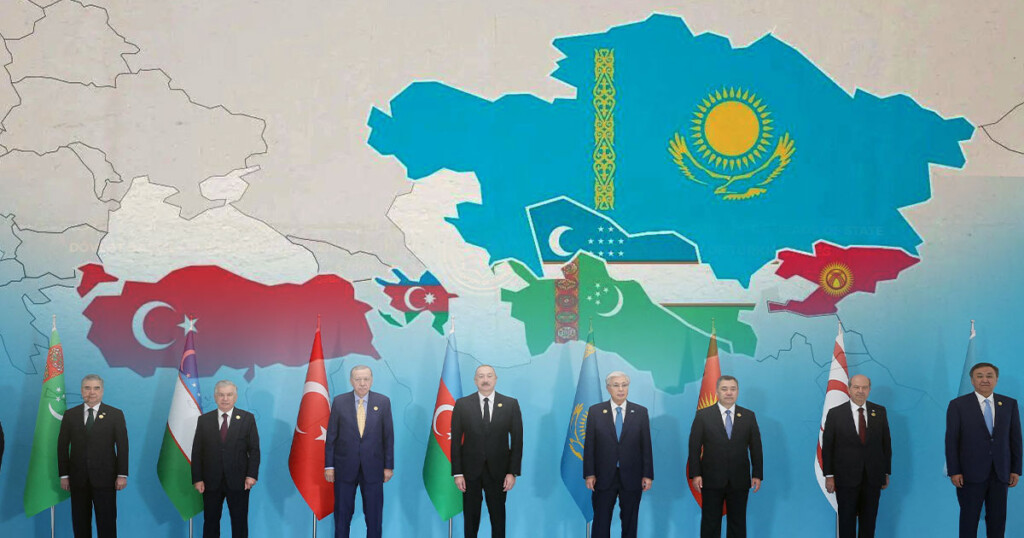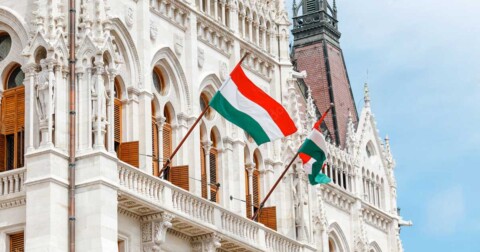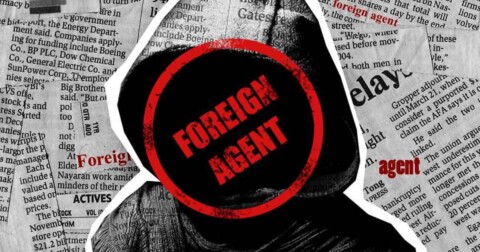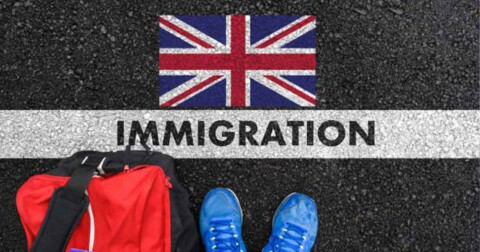The victory, above all of Turkey and then of Azerbaijan in the Second Karabakh War, gave a strong impetus to the entire Turkic world. This was stated by Binali Yıldırım, Chairman of the Council of Elders of the Organization of Turkic States (OTS), when assessing Azerbaijan’s role in the work of this organization. He added that Azerbaijan’s victory in Karabakh breathed new life into the Turkic world. In that context, Yıldırım quoted the words of Devlet Bahçeli, leader of the far-right nationalist MHP party, who, commenting on the incident at a mosque of the Limassol Eparchy—where unknown persons wrote slogans and drew the Greek flag—said: “A Turk has no friend other than a Turk.”
HOW TO PUT MOSCOW TO SLEEP
The collapse of the military-political status quo in Nagorno-Karabakh (which had been in force since May 1994, the moment the Agreement on an Indefinite Ceasefire entered into effect) occurred in November 2020. Turkey’s participation in the war on the side of Azerbaijan disrupted the balance of power in the South Caucasus.
With the signing of the Shusha Declaration, Azerbaijan strengthened its military and security ties with Turkey, a NATO member. According to Ahmed Alili of the Caucasus Center for Political Analysis in Baku, Azerbaijan has become for Turkey “the main non-NATO ally,” similar to how Israel, Egypt, and Japan are for Washington.
Since 1828, the region had been a centuries-old sphere of Russia’s national interests. In order to challenge Moscow’s influence, Turkey provided Azerbaijan with full military and diplomatic support in its war against the Armenians in Nagorno-Karabakh. The Karabakh experience showed that Turkey’s policy aimed at containing Russia in the region has succeeded, while Moscow failed to retain its former influence. Regardless of the outcome of the crisis in Ukraine, all relevant regional actors are already feeling its consequences.
In the long run, both Azerbaijan and Armenia have made a strategic decision as to which center of power they will align with. Western centers of influence, which are actively operating in the South Caucasus, assumed that—if Russia bases its strategic assessments on distorted perceptions of reality—this would buy time for the realization of their projects. This applies especially to those states that needed to be gradually pulled out of Russia’s sphere of influence by lulling the vigilance of the Russian elites responsible for state and regional security.
The centers shaping the future of the region fully understand that Russia can thwart their plans through timely counter-measures, influencing the situation both in the states under Western influence and outside of them. Azerbaijan is precisely one of those key countries where the authorities, coordinated by Russia’s strategic adversaries, managed to buy time and lull Moscow’s vigilance.
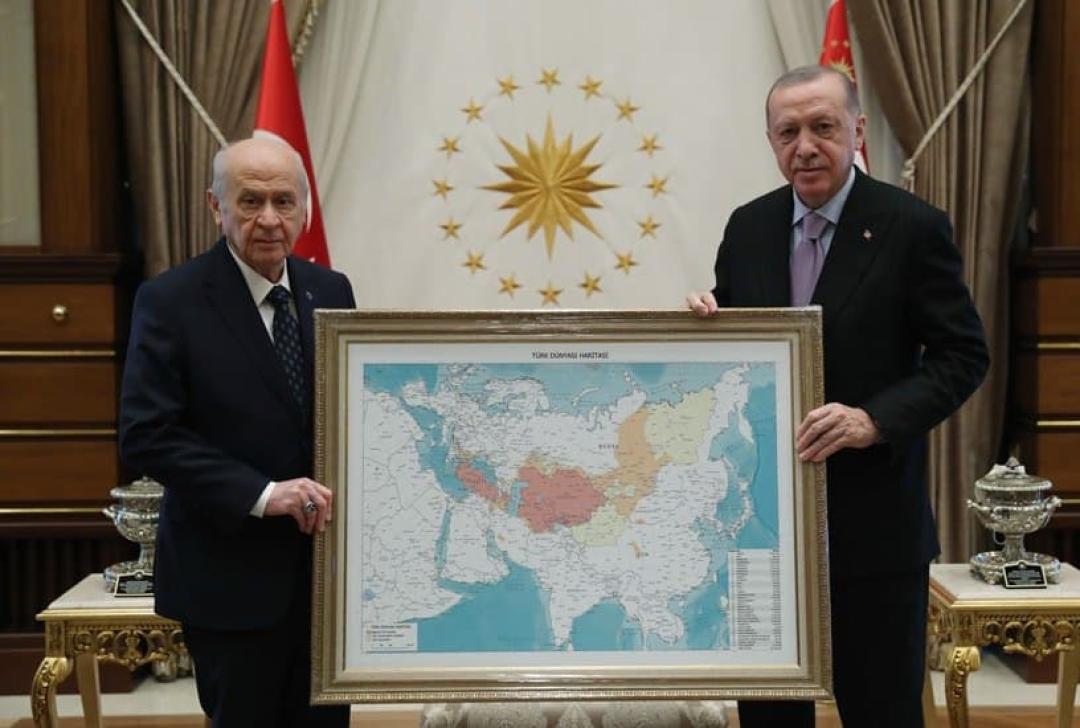
THE PEOPLE’S FRONT IN TURKISH POLITICS
Today, Turkey is the state that has emerged as the victor in the struggle for this key Transcaucasian country. In the countries where they operate politically and culturally, the Turks work actively not only with political elites but with the population itself. They are aided—and permitted—in this by the authorities, which was one of the conditions for the Aliyev family’s rise to power. The opposition in Azerbaijan, which is also directly or indirectly controlled by the government, is likewise involved in all of this.
The popular factor in Turkish politics always occupies a special place. Turkey’s ideological and cultural outreach, which moves in two directions—Pan-Turkism and Pan-Ottomanism—creates generations within society that will be present in government, the opposition, media, business, culture, and most importantly, in the police and the army. In this direction work the official ideology, the armed forces, primary and secondary schools, universities, and media in Azerbaijan.
Another very important direction of Turkey’s activity is work with Azerbaijani youth and students. Thousands of Azerbaijani students are educated in Turkey across various fields. The other key direction is the Azerbaijani army, which has long been built according to NATO standards. Thousands of Azerbaijani officers have received training in Turkey. Every year, Turkey and Azerbaijan hold a wide range of joint military exercises.
INTEGRATION EXPERIMENTS — RISK OR PRAGMATISM?
In the background of the recent summit of the Organization of Turkic States (OTS) in Gabala, where economic cooperation and a possible military format were discussed, the topic of integration has once again entered the focus of international politics. Countries in the region are actively seeking a balance between symbolic unification and real strategic interests, including military aspects.
Let us take Central Asia as an example. Uzbekistan and Kazakhstan were never part of the Ottoman Empire—nor, incidentally, was Azerbaijan. The latter oriented itself toward Turkey only briefly—from 1918 to 1920, during the first Azerbaijan Democratic Republic, and then in the post-Soviet period. If, however, we look back at the history of the khanates dominated by the so-called ancestors of today’s Azerbaijanis—whom the Russian Empire referred to as “Caucasian Tatars”—we see that until the conclusion of the Gulistan and Turkmenchay peace treaties they were within the orbit of the Persian state. Even Shiite Islam, not Sunni, was dominant among them. Sunnitization is a relatively recent phenomenon.
Historical trajectories differ—and that is a fact. Yet these differences cannot be called insurmountable. In the end, everything comes down to pragmatism. How much, for example, do Kazakhstan or Kyrgyzstan need confrontation and conflict with Russia? Obviously—not at all. Why would they do that? For the sake of symbols that have little connection with their historical experience, except for the period of national awakening at the end of the 19th and beginning of the 20th century, when intellectual circles actively debated ideas of Pan-Turkism and attempts were made to merge Turkic and Islamic identities into a single whole.
But is that today a sufficient reason to take risks and embark on new integration experiments at the price of breaking with old, already proven models?
POST-SOVIET INTEGRATION OR A PANTURKIC AWAKENING?
After the establishment of the Turkic Council in 2009, many commentators greeted this organization with suspicion, calling it a “folklore exhibition.” However, the events of 2020–2021 gave Turkic integration new momentum.
What actually happened in 2020–2021?
Two states, Russia and Iran, behaved in this situation in a, to put it mildly, strange manner. One got the impression that a serious geopolitical upheaval in the region did not concern them at all, as if they were territorially located on the planet Mars. The now-deceased military analyst, founder of the Center for the Analysis of Strategies and Technologies (CAST), Konstantin Makiyenko, wrote at the time:
“The geopolitical consequences of the second Karabakh war are catastrophic not only for Armenia but also for Russia. Behind the thin veil of the deceptive triumph of foreign policy—successful mediation and the deployment of peacekeepers (or hostages?) in the region—harsh reality will soon emerge. Moscow’s influence in the South Caucasus has sharply weakened, while the prestige of a successful and warlike Turkey has, on the contrary, grown many times over. Essentially, why should Baku now continue its cautious policy of balancing between the three imperial powers—Russia, Turkey, and Iran—which have been the main actors in the region for the past three centuries? The main national goal—the return of the territories lost in 1994—has been achieved, direct communication with Turkey secured, and Russia can now be spoken to in an entirely different tone. The balance of influence in the Turkic-speaking republics of Central Asia will drastically shift in favor of Ankara. Russia’s client and ally has found itself in the position of a loser. Turkey’s ally has convincingly won. Is this not a reason to consider which project has more prospects—post-Soviet integration or a Pan-Turkic awakening? There is no doubt that Turkic nationalist and separatist groups within Russia itself will also sharply activate. Ukrainian revanchists have likewise received a strong boost, and they will, of course, inevitably apply the Karabakh-2020 scenario to the situation in Donbas.”
Turkey’s support for Azerbaijan in all aspects of the conflict was a demonstration of power, influence, and the ability to project force not only in the political arena. This naturally affected the potential of integration projects under Ankara’s patronage. It should be recalled that the Turkic Council was transformed into the Organization of Turkic States in November 2021—exactly one year after the “second Karabakh” war.
FROM A FOLKLORIC EXHIBITION TO AN INSTRUMENT OF SERIOUS POLICY
Today, the OTS is in a phase of reassessing its integration format. The festival-like and symbolic stage has passed; the organization is taking steps toward a more serious political role, although that process is still in its early phase. In order to become a “working” organization, institutional steps are being taken: the creation of a full-fledged headquarters with permanent missions, the formation of a budget for joint projects, and the establishment of regular coordination mechanisms.
The historical successes of Turkey and Azerbaijan in Karabakh show that integration is possible not only symbolically but also in practical spheres — military, diplomatic, economic. For now, the OTS remains in a transitional stage, with the ambition to transform into an instrument of realpolitik.
Some individuals in high offices in Moscow have considered the idea that Azerbaijan might replace Armenia as a key ally. The logic was: if Yerevan is no longer loyal to Moscow, one should turn toward Baku. But practice has shown that such things do not function automatically.
Therefore, when Ilham Aliyev speaks about military exercises and cooperation among Turkic states, both Moscow and Tehran — and even Beijing — should pay serious attention. Azerbaijan has twice in the past five years changed the region’s status quo by military means. Despite some progress in peace negotiations with Armenia, Baku is not abandoning its military programs. Moreover, Aliyev has repeatedly emphasized: Azerbaijan needs a strong army to protect its sovereignty. This raises the question: protect it — from whom? From Russia and Iran?
Turkic integration today is multilayered and directed along several paths. For the Central Asian states, it is primarily cultural and economic. For Azerbaijan — already military-political as well.
Through its tandem with Baku, Turkey seeks to demonstrate its independence not only from Russia and Iran but also from the West. Ankara is trying to capitalize on its special position between East and West, turning its role as an intermediary into a source of political capital.

STRATEGIC COORDINATION OF THE TURKIC STATES
Two days after the presidential elections in Azerbaijan, on February 9, the technical director of Baykar, Selçuk Bayraktar, together with Ilham Aliyev and his son Heydar, visited the bases of the Azerbaijani Air Force and attended the flights of the newly purchased Akıncı strike drones, after which he delivered a ceremonial, highly emotional speech. At the same time, the Drone Academy for the Azerbaijani military was opened, where systems such as AKINCI and Bayraktar TB2, the target aircraft Şimşek, the cruise missiles ÇAKIR and SOM (launched outside air-defense range), the air-to-air missiles GÖKDOĞAN and BOZDOĞAN, the high-precision missiles KGK-82, LGK-82, TEBER-82, HGK-82 (equipped with a folding-wing guidance system), as well as the MAM-T/L/C munitions are studied.
These are only the latest examples of Azerbaijan–Turkey military-technical cooperation, which, as we know, is taking extremely advanced forms — including the modernization of Soviet combat aircraft of the Azerbaijani Air Force, carried out by Turkish companies.
After the presidential elections, Baku further intensified its focus on the Organization of Turkic States (OTS) and its role in uniting the “Turkic world.” Expanding defense cooperation within the OTS — whose members are Turkey, Azerbaijan, Kazakhstan, Uzbekistan, and Kyrgyzstan, while Turkmenistan (for now), Hungary, and the internationally unrecognized (except by Ankara) Turkish Republic of Northern Cyprus hold observer status — represents a turning point in regional dynamics.
Members of the “Turkic” alliance are increasingly focusing on mutual security and “strategic coordination,” as well as on developing a joint foreign-policy agenda.
FROM CULTURAL TO MILITARY COOPERATION
During his inaugural speech in the Milli Majlis on February 14, the newly re-elected president Ilham Aliyev outlined the country’s foreign-policy priorities within regional integration projects, designating the OTS as the main direction of foreign policy while dismissing alternative organizations without explicitly naming them.
“For us, this is the main international organization, because this is our family. We have no other family. Our family is the Turkic world.”
Such an unambiguous stance signals to Euro-Atlantic military–political structures, as well as integration projects under Russian protection, that Baku does not intend to join them. For Azerbaijan — a littoral (Caspian) state — the OTS provides significant potential for balancing relations with other regional powers, assuming an ever-growing role in the country’s foreign policy. Additionally, this institution holds exceptional importance for other member states amid rising geopolitical tensions, according to one Western analytical portal.
Over the past year, the OTS has made significant progress in institutionalization in areas such as: the Civil Protection Mechanism, the Turkic Judicial Training Network, the Union of Notaries of the Turkic World, the Turkic Investment Fund, the Organization of Trade Unions of the Turkic States, and others.
Thus, from March 17 to 19, in the Kazakh city of Taraz, a meeting of the agriculture ministers of the OTS states will be held, as well as the Turkic Agrarian Business Forum.
The “Fatwa Coordination Group,” established under the Council of Religious Leaders of the OTS, determined that the first day of Ramadan in 2024 would be March 11. One of the key directions of integration is the development of allied relations among member states and the deepening of military ties. The final communiqué of the November 2023 OTS summit in Astana contained a call for “even closer cooperation in the field of the defense industry and military cooperation.”
The participating states carry out joint projects in the economy, culture, connectivity, energy, and other fields, also developing military and security cooperation — but they do so primarily in a bilateral format.
THE COLOSSAL POTENTIAL OF THE OTS
On February 28, the Majilis of Kazakhstan ratified the Agreement on Allied Relations with Uzbekistan, signed in Tashkent on December 22, 2022, and ratified in Uzbekistan last year. The document elevates the bilateral relations between the two states — between which elements of rivalry for regional leadership had previously appeared — to a new level of cooperation, prohibiting them from entering any blocs or alliances or joining any actions directed against the other side. In content, it resembles the Shusha Declaration between Azerbaijan and Turkey, but unlike it, the Kazakhstan–Uzbekistan agreement does not obligate the sides to provide mutual support in the event of an attack by a state or a group of states.
During the recent visit of Kazakhstan’s president Kassym-Jomart Tokayev to Azerbaijan, several bilateral agreements were signed. In an interview with the APA agency, the Kazakh leader repeatedly emphasized the advantages of the OTS and its “colossal potential”:
“Here are just a few figures: total territory — about 4.5 million square kilometers; total GDP — more than 1.5 trillion dollars; population — over 160 million people. Internal trade turnover within the OTS has reached 42.3 billion dollars, while the total trade of the Turkic countries with the world amounts to about 1.3 trillion dollars. All the states of the Organization are firmly integrated into global economic flows and actively operate within key international organizations.”
“I believe that this is more than sufficient for the further successful advancement of integration processes within the OTS.”
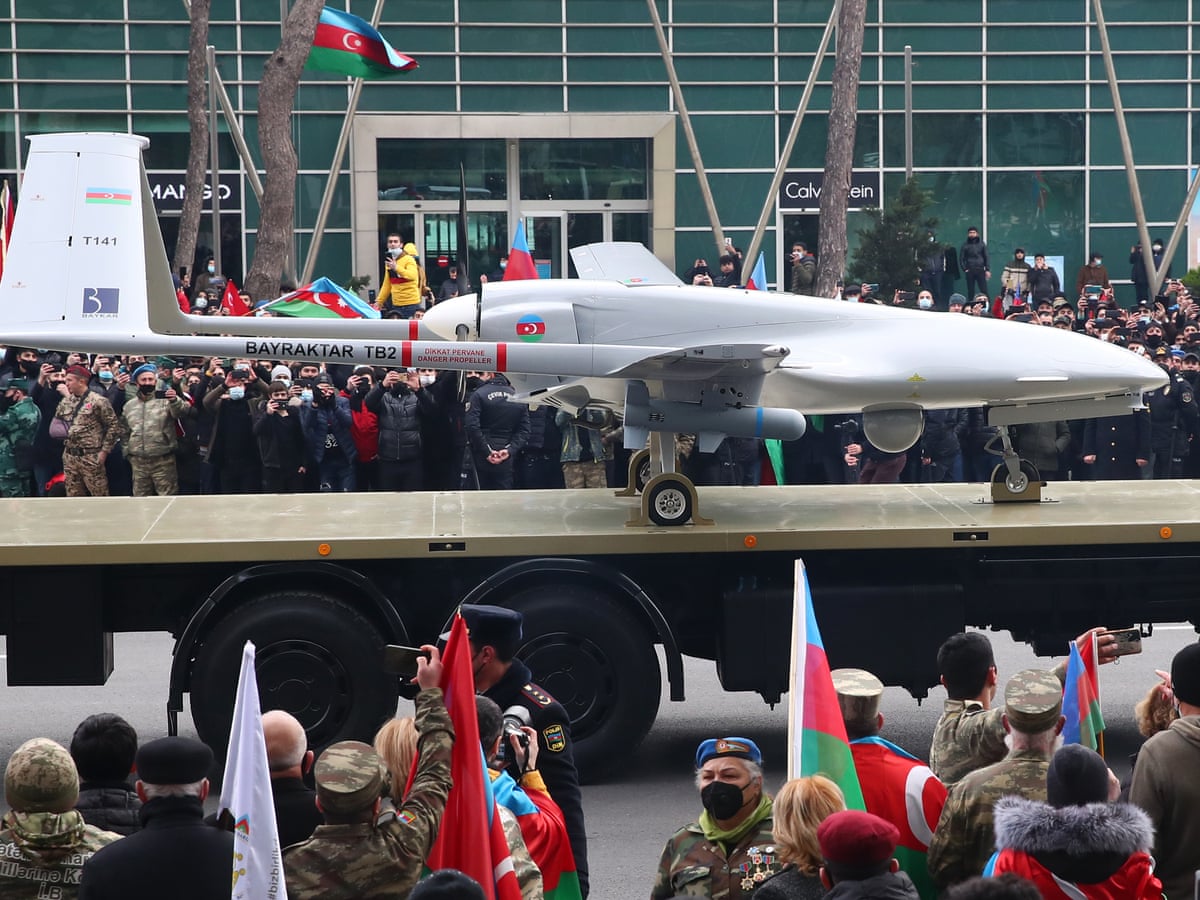
TURKISH DRONES FOR THE TURKIC STATES
As already mentioned, Baku supports defense cooperation within the OTS.
“Wars and bloody conflicts are breaking out. Under such conditions, above all, the main guarantor of security becomes defense capability. I believe that cooperation between member states in areas such as security, defense, and the defense industry should be expanded even further.” Aliyev said at the summit in Astana in November 2023.
Bilateral agreements among OTS members could be accompanied by multilateral initiatives. According to one observer, “when collective and multilateral cooperation not related to security begins to function ‘normally’ for the current generation of national leaders and the public in the region, the evolutionary path toward closer military and security cooperation will also become normal.”
In May 2022, Kazakhstan and Turkey, within the framework of their previously established “enhanced strategic partnership,” reached an agreement on the production of Turkish drones in Kazakhstan, which became the first country outside Turkey where such production is possible. In October 2023, it was announced that drone production in Kazakhstan would begin in 2024.
“Our goal is not only to open production, but also to transfer knowledge and technologies, so that in the future Kazakhstan can independently produce drones,” said Erol Oguz, a representative of Turkish Aerospace, regarding the production in the Central Asian republic.
Turkish defense companies ASELSAN and ROKETSAN operate in Azerbaijan and plan to expand their activities. According to reports, one of the components for the recently ordered Turkish fighter jet KAAN is already being produced on the Caspian coast. Turkish drones in the arsenal of the Azerbaijani Air Force have already been discussed; similar drones are also deployed in Kyrgyzstan and Turkmenistan, and at the end of 2023 the last Turkic state in Central Asia to procure Turkish drones was Uzbekistan.
THE ARCHITECTS OF SECURITY IN THE “NEW” EURASIA
Aliyev’s reaffirmation of his commitment to the OTS underscores the leading role of this organization in shaping the foreign-policy agenda of its member states. In addition, the integration of Turkish defense companies into the military-industrial infrastructure of former Soviet republics allows supporters of “Turkic” integration to speak confidently about its advantages.
From joint production enterprises to the deployment of state-of-the-art Turkish drones in regional conflicts, the OTS is becoming a serious actor on the geopolitical map of Eurasia. Member states are moving toward deeper integration in various spheres, but they do so cautiously, keeping in mind the potential reactions of Russia and China.
Still, the overall trajectory is clear: one way or another, the “Turkic” alliance, rooted in cultural and linguistic affinity, will play an increasingly visible role in shaping the security architecture of the “new” Eurasia.
And it is hardly a coincidence that in Russia, from time to time, one can hear calls from proponents of culturally and politically motivated “Turkism” to examine the OTS more closely — and even, after appropriate preparation, to consider the question of applying for membership in it!
At summits, there are also ideas about the possible inclusion — in various forms — of Pakistan, Iran, as well as Georgia, which lies along the “Middle Corridor,” the route that leads from China through Central Asia, the Caspian Sea, the Caucasus, and Turkey into Europe.
The recent visit to Azerbaijan by the UAE crown prince, Sheikh Mohammed bin Zayed Al-Nahyan — which included participation in horse races on the picturesque Jydyr Duzu plateau in Shusha — has also become a reflection of the growing interest of the Gulf monarchies in this and other OTS countries.
